7 Unusual Ways to Use Emojis in Brand Communication
Have you ever used emojis in your messages? Of course you have. As this simple and universal language is understood by everyone, emoji usage has recently expanded beyond online communication. It is now frequently utilized by marketers for various offline purposes, from billboard ads and album covers to capsule clothing collections.
Brands have learned that attention-grabbing icons are easily readable, engaging, and can also serve as mood boosters. Moreover, due to rich meanings and the ability to express emotions, emojis remain a crucial element in today’s communication.
On July 17, the world celebrates Emoji Day. In light of this, we decided to share seven unusual ways for brands to communicate with emojis. In the article, you’ll also find a creative emoji video explainer, a list of potential emojis for 2023, and a thematic visual collection. Ready to explore?!
Why do brands use emojis?
Many of you may wonder why famous brands use emojis in their communication and launch emoji-centered campaigns. We’ve got an answer backed up by some statistics.
1. Emojis are universal
Even though Gen Z interprets and utilizes emojis differently than other generations, most internet users translate them in the same way. On top of that, being a visual element, emojis make your text-based content easier to comprehend.
2. Emojis can humanize a brand
When you communicate with your customers in the same way they communicate with their friends daily, you can relate to your audience and add personality to a brand. Customers are more inclined to purchase from a brand if its personality matches their own.
3. Emojis affect engagement
Many studies show that emojis used for marketing purposes drive engagement. Zazzle Media found that Facebook posts that contain emojis receive 57% more likes, 33% more comments, and 33% more shares. A study by the myclever Agency has shown that emails with emojis in subject lines lead to a 56% increase in open rates compared to text-only subject lines.
4. Emojis help retain customer attention
Using text alone is not always the best strategy for a brand to attract attention and stand out. People are mostly visual creatures that prefer graphic content over written content. Therefore, text enhanced with visual elements such as emojis captivates and creates an added effect, making it easier to understand.
5. Emojis are free to use
When it comes to budget, every business strives to distribute it as effectively as possible. So, why not take advantage of something that will boost engagement and sales for free? Emojis are completely free to use, and the only resource they require is time. We all need extra time to choose the right emoji, don’t we?
If you’re still unsure why using emojis in your brand communication is a must, we invite you to watch the recent episode dedicated to emojis on our “Creativity: Inside & Out” YouTube channel. In the video, you’ll also learn about the history of emojis, their evolution, and top tips for nailing emoji marketing.
Image collection from Depositphotos
To shorten the wait for new emojis and get you in the festive mood before World Emoji Day, we’ve put together a collection of emoji-themed visuals. Here, you’ll find images for social media posts, website banners, and print materials, as well as inspiration for your next creative project or marketing campaign.
7 Best ways to communicate with your audience using emojis
#1 Take advantage of the trend
In late December 2021, the game Wordle went viral on social media. It’s simply designed, with a block of 30 squares and a letter keyboard at the bottom. You have six attempts to guess the hidden word by typing five-letter words into the block. The color of the tiles will change after each guess to show how close your guess was to the word. You can only do one puzzle per day.
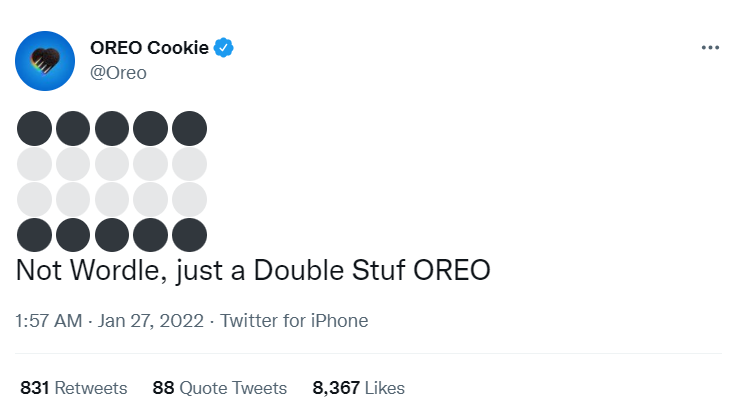
Source: Oreo’s Twitter
The game allows you to share your results with your Twitter followers, and users have started making posts about the game, but in a comedic manner. The main purpose was to show something resembling Wordle tiles with emojis and say: “not a Wordle, just a …”.
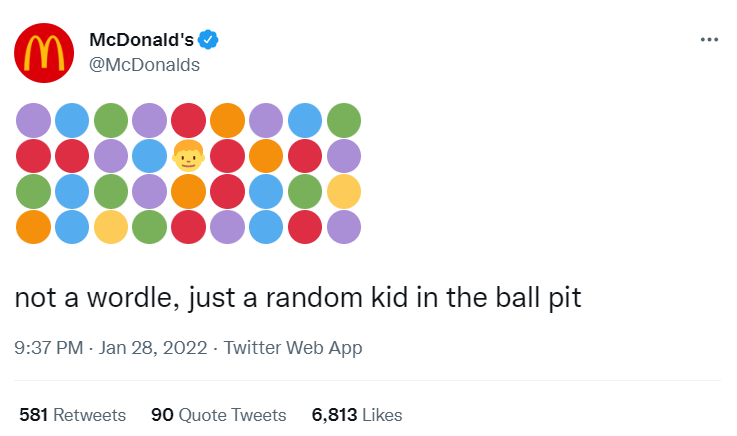
Source: McDonald’s Twitter
Famous brands like Oreo and McDonald’s have used the trend to push boundaries and build bonds with their customers. A simple idea and a little creativity allowed them to show their audience that they follow trends, resulting in more likes and retweets. Most importantly, these posts looked natural in their feeds and touched the brands’ target audiences.
#2 Use emojis to make sales
In 2015, Domino’s launched a campaign called “Domino’s AnyWare” that allowed people to order their favorite pizza by simply tweeting a pizza emoji. Even though consumers had to complete some setup, the campaign was a success. AnyWare helped Domino’s meet and exceed its goal of having 50% of all orders placed digitally and increase sales. Following its first success, the campaign went live, generating 10.5 % year-over-year sales growth for the brand.
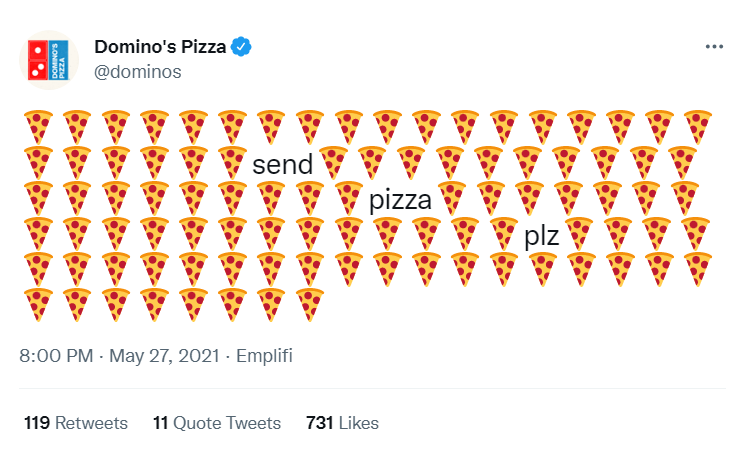
Source: Domino’s Twitter
#3 Create a quiz
Emoji quizzes aren’t new; you can find one online on almost every topic: movie, TV show, song, book, band, celebrity, country, city, and many more. YouTube bloggers successfully use them in their shows to entertain viewers, while brands like Netflix create emoji quizzes to engage followers.
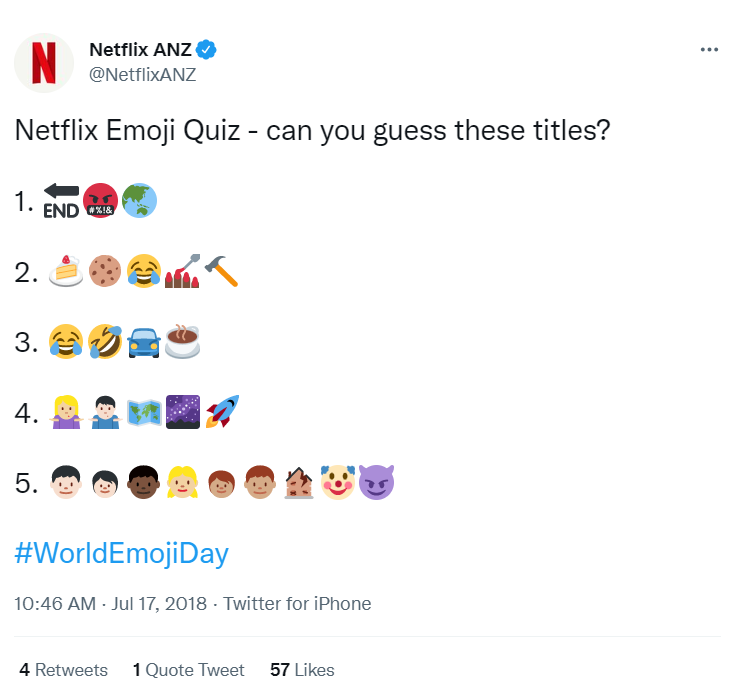
Source: Netflix Twitter
#4 Make it part of your marketing campaign
Before the release of Deadpool in 2016, the film’s marketing team launched an off-the-wall promotional campaign. From the creation of a Deadpool Tinder profile to a billboard ad featuring a non-standard set of emojis, the risk paid off. People went crazy online in anticipation of the film’s release. The billboard ad, which included a skull, a poo emoji, and the letter L, even drew the attention of comedian Patton Oswalt, who complimented the ad’s creators.

Source: Patton Oswalt’s Twitter
The Deadpool marketing team did not stop with the billboard and released a Deadpool Emoji app with custom icons. Although it was not the most handy app, Deadpool fans loved it and spread the word about it online.
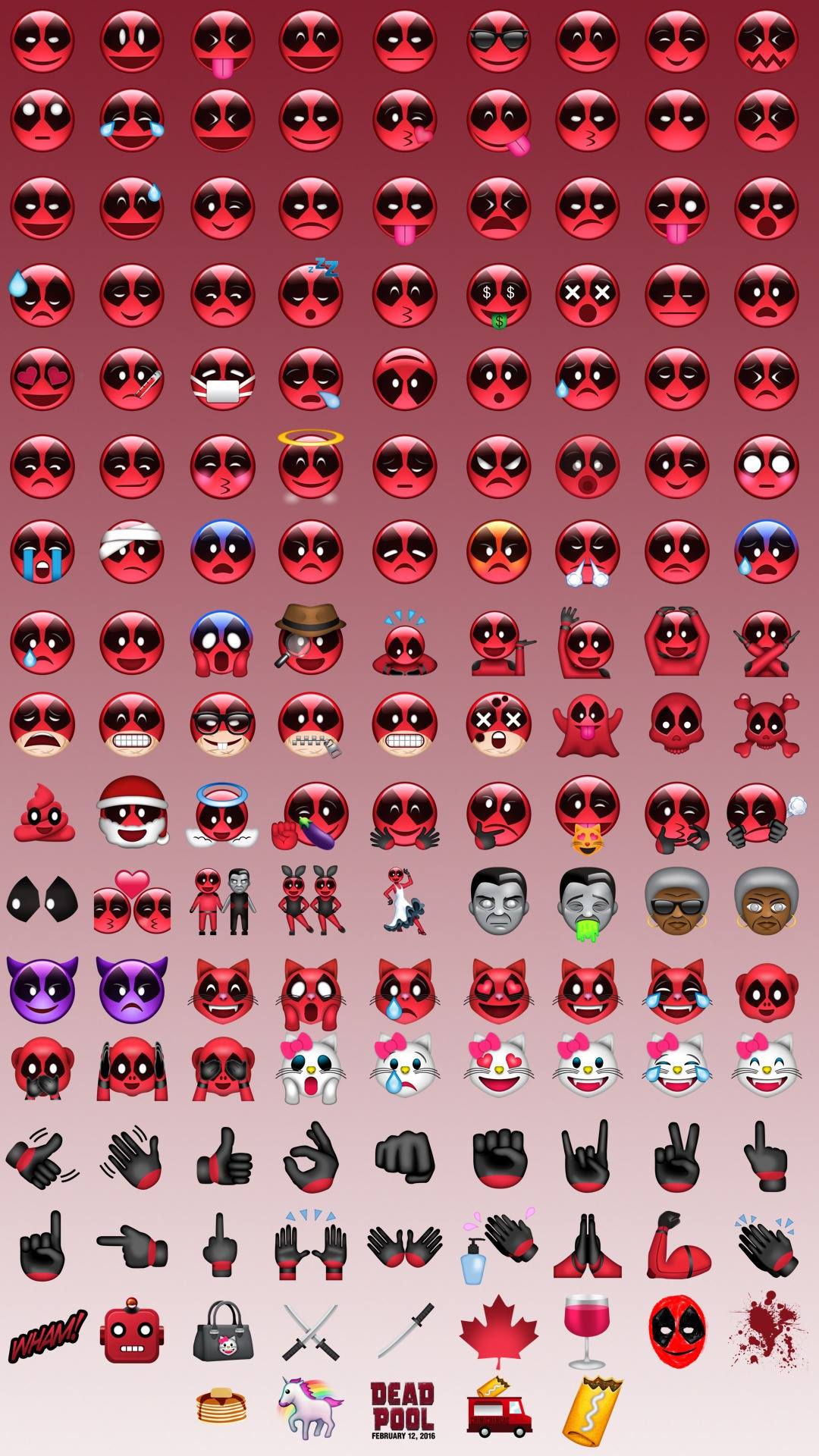
Source: Deadpool Movie Facebook
#5 Interact with the audience
YouTube uses emojis as a way to interact with its audience. They recently asked Twitter followers to drop their channel names, so the brand could quote them with an emoji that captures their vibe. It was so well received by the audience that it got over 12,000 likes and 500 retweets.
Source: YouTube’s Twitter
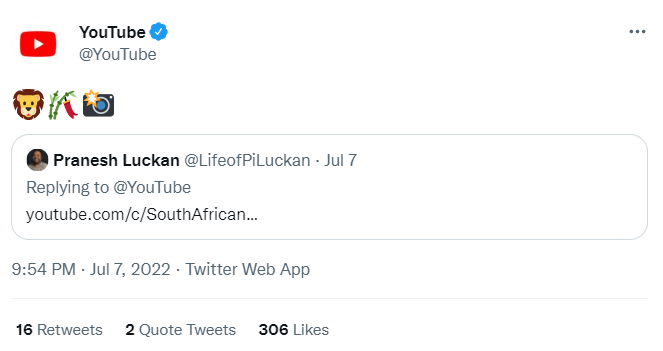
Source: YouTube’s Twitter
#6 Use emojis from other brands’ tweets to make a joke
Bud Light recognized an opportunity in an emoji-based NFL tweet and made a joke out of it. As a brand that caters to football lovers, Bud Light reminded customers of their main product and when it is most appropriate to consume it.
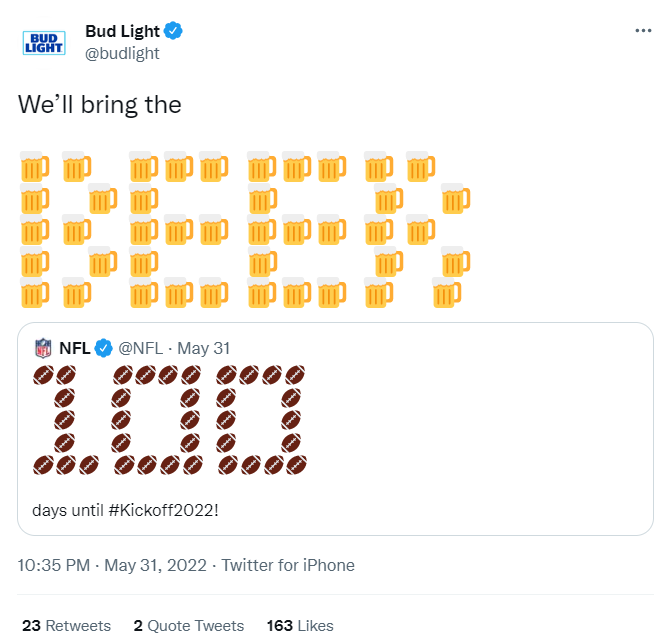
Source: Bud Light’s Twitter
#7 Support the community
You can also use emojis to support communities, as Coca-Cola did. Following LGBT Pride Month, the company tweeted emoji hearts in rainbow colors, reminiscent of the rainbow flag – a symbol of lesbian, gay, bisexual, transgender (LGBT) and queer pride, as well as LGBT social movements.
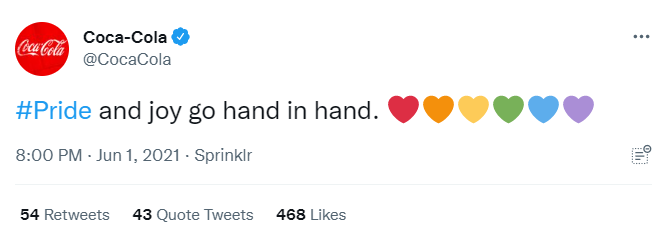
Source: Coca-Cola’s Twitter
Final tips on using emojis
- Research what emojis you use, what they mean, and whether they make any sense. You don’t want to end up posting something with a not so appropriate hidden meaning.
- Don’t force it. The emoji in your text should be a natural fit, nothing forced.
- Stick to your brand’s tone of voice. Before posting anything, ask yourself if it’s appropriate for your business and conveys its message.
- Don’t overuse emojis in your communication, as you can bore or alienate your audience.
- Understand what emojis your customers use and mirror them. People are drawn to brands with a similar personality.
- Consider the platform. The most popular emoji on one platform may not be popular on another.
What new emojis to expect in 2023
Recently, Unicode, the organization responsible for approving new emojis, has revealed symbols being considered for the next release in 2023. The list contains 21 new emojis, including three new colored hearts — grey, pink, and light blue.
Animal-related icons, including a crow, goose, moose, donkey, and jellyfish. Emojis depicting plant life are also being considered. These are ginger root, peas, and hyacinth. Human-related symbols include a shaking face and left and right pushing hands.
Music lovers will find new instruments on the list – a flute and maracas. Among creative icons you’ll find a wing, folding hand fan, and hair pick. Potential emojis also include a khanda – the symbol of the Sikh faith, and a wireless symbol.
Wrapping up
Since the creation of emojis, these eye-catching icons have changed the culture of online communication and how brands interact with their audience. To appeal to customers these days, you should speak their language, and the emoji is one of them.
Emoji usage is influenced by many factors, including culture, trends, and platforms. Therefore, to be competitive in our visually-driven world, pay attention to prevailing moods and trends, and use the most relevant emojis in your visual communication.
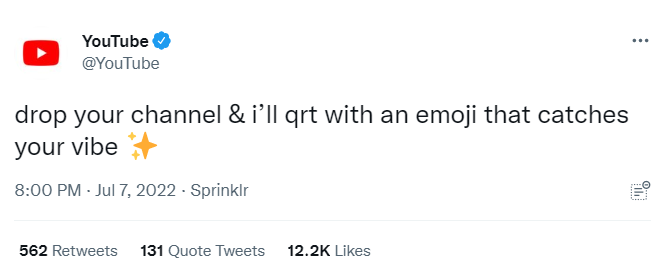





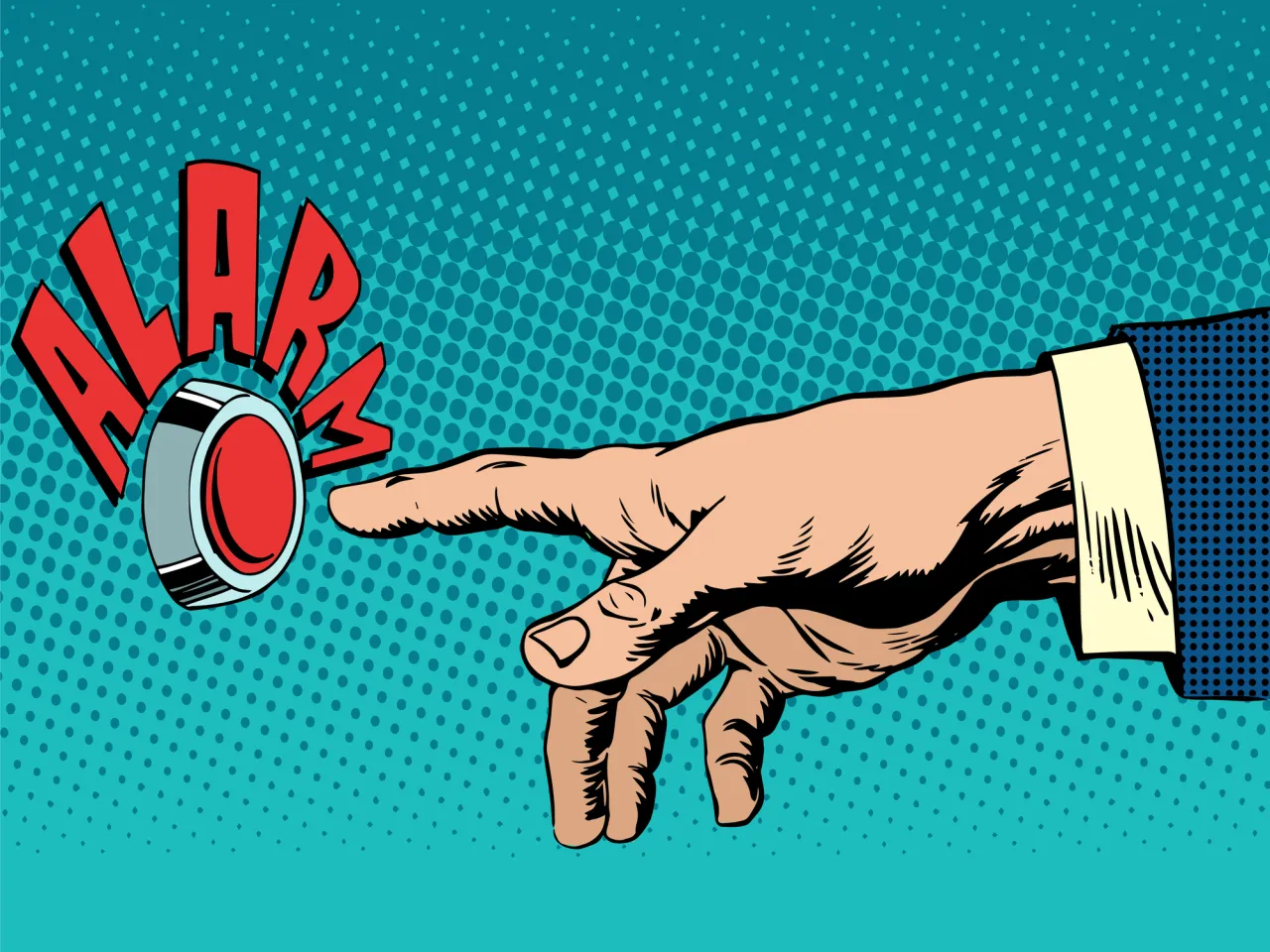
![Your Guide Integrating Audio Into Brand Communication [Infographic]](https://depositphotos-blog.s3.eu-west-1.amazonaws.com/uploads/2020/11/A-Guide-Integrating-Audio-Into-Brand-Communication-Infographic.webp)

